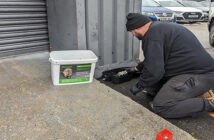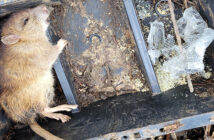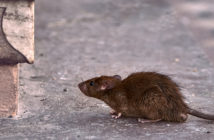The UKs Rodenticide Resistance Action Group (RRAG) has submitted a comprehensive new report to the Health & Safety Executive (HSE) on the status of anticoagulant rodenticide resistance in the UK
The new 35-page report on rodenticide resistance has been prepared for RRAG by Dr Alan Buckle and Dr Colin Prescott from the Vertebrate Pests Unit at the University of Reading in response to request from The Netherlands to the European Commission for an EU-wide update on rodenticide resistance. The UK response is being made to the Commission”s Technical Committee on Biocides by HSE in its role as the country’s competent authority under the Biocidal Products Directive.
|
As RRAG points out, we are now almost completely reliant on anticoagulants for chemical rodent control in the EU and there is plenty of evidence that the incidence of resistance among both Norway rats and house mice is increasing in several Member States. It was the publishing of new Dutch research last September which prompted this EU-wide initiative. That research showed that 56% of Norway rats in Holland carry anticoagulant resistance mutations with 39% of rats carrying genetic mutations that are known to affect the efficacy of anticoagulants. The two mutations, Y139C and Y139F, most commonly found in Holland, are both also found here in the UK. |
|
|
|
The RRAG report explains how resistance to anticoagulant rodenticides has been studied in the UK for over forty years, giving the UK an understanding of the phenomena which is second to none. It summarises the findings over those 40+ years and includes the preliminary result from the new genetical techniques which now provide a definitive means of identifying resistant genotypes. A total of nine different anticoagulant resistance mutations have been recorded in the UK Norway rat population. No other country has so many different forms of resistance present in its rat population. Five of these are particularly important and three: L120Q, Y139C and Y139F, confer practical resistance to bromodiolone and difenacoum, the main two second generation anticoagulants used in the UK. Brodifacoum, flocoumafen and difethialone are effective against these three genotypes but cannot presently be used because of the regulatory restriction that they can only be applied against rats that are living and feeding predominantly indoors. The geographical distribution of anticoagulant resistance is also outlined in the report. When it comes to mice, resistance to first generation anticoagulants is known to be widespread. Whilst the situation is not as well understood as in Norway rats, two resistant genotypes L128S and Y139C have been documented in the UK house mouse population. Baits containing brodifacoum, flocoumafen and difethialone are effective against house mice and may be applied in the UK because house mouse infestations are predominantly indoors. There are some reports of resistance among mice in some areas to the second-generation anticoagulant bromadiolone, while difenacoum continues to be largely effective. The report also considers the alternatives to anticoagulant rodenticides. It concludes that whilst habitat manipulation, denial of the availability of food and the prevention of ingress to structures, is part of sustainable rodent pest management such techniques cannot be used to remove any sizeable rat infestation and, for practical reasons, their use against house mice is problematic. To conclude, this European Commission initiative should raise the profile of anticoagulant resistance. Even more importantly, RRAG hopes it will encourage the implementation of practical resistance management strategies such as those published by RRAG. |
||




